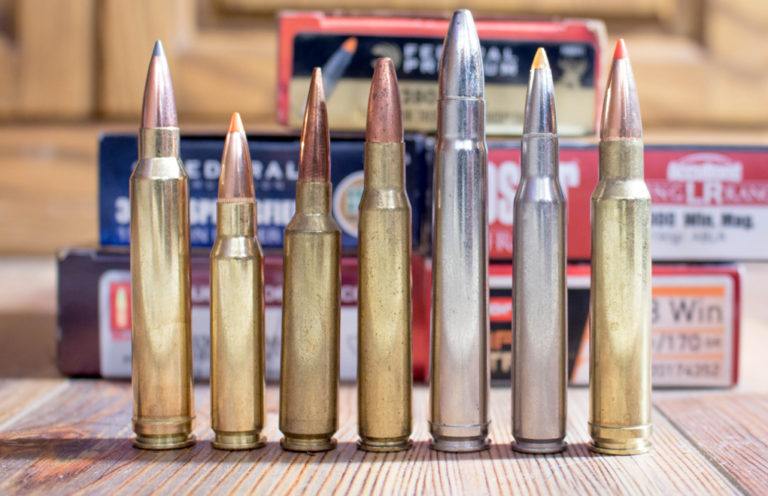
Choosing an all-around cartridge requires a bit of honest soul searching.
How to pick an all-around cartridge:
- Accept no one cartridge does it all.
- Figure out what class of game you'll hunt most.
- Consider the overall availability of the cartridge.
- Choose one you are comfortable with and can master.
I’m often asked by prospective rifle buyers which cartridge to choose for an all-around hunting rifle. It’s a difficult question to answer, because everyone’s bucket list is different, and there are so many good choices on the market today. Some like the traditional, highly popular cartridges, and some prefer to walk a different path — and it’s that variety that makes the decision so interesting.
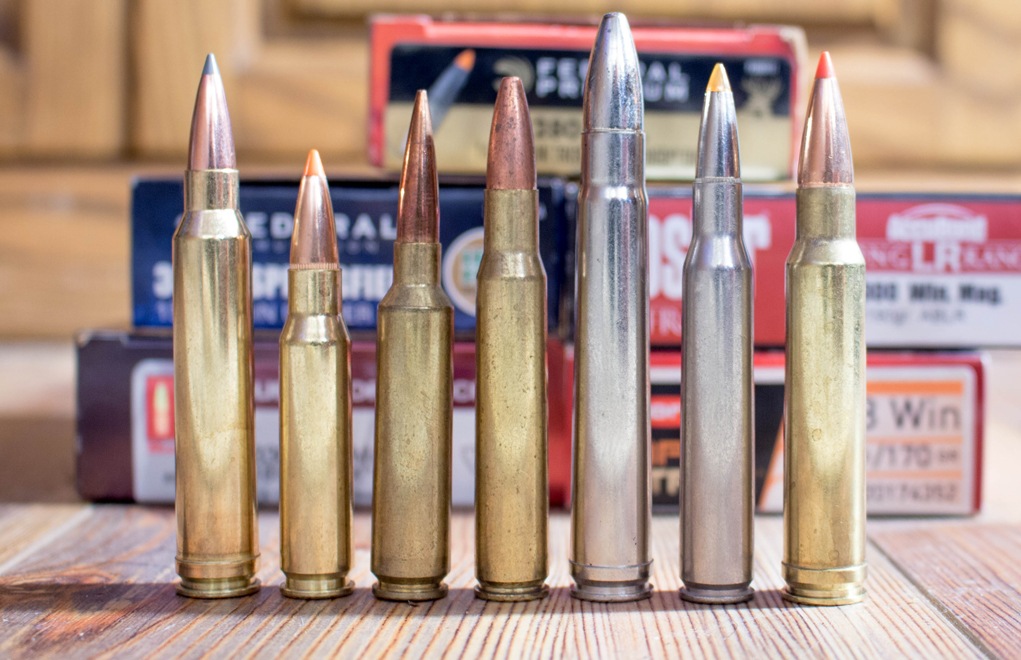
To answer the question properly, we’ll need to identify exactly which species and hunting situations you’ll anticipate the rifle will handle, and then move forward from there. If you’re an avid whitetail deer hunter and that’s your primary focus, the answer could lie in cartridges ranging from 6mm up to the .30 calibers, with many great choices in between.
The 6.5mm cartridges are a wonderful choice for the deer hunter, offering a flat trajectory and fantastic performance in the wind. They will neither pound your shoulder to bits nor generate a ton of bloodshot meat, providing you select one of the milder cartridges. Certainly, the .308 Winchester and .30-06 Springfield will also make a fantastic choice for the deer hunter, as the lighter 150- and 165-grain bullets give respectable hunting trajectories and plenty of horsepower for any deer, anywhere.
Likewise, any of the moderate 7mm cartridges are a good choice, as the 140- to 160-grain bullets make wonderful deer medicine. It may come down to availability, which will explain the continued popularity of the .30-06 Springfield and .308 Winchester (or does the success of the cartridge dictate availability?), but if you choose a 7×64 Brenneke — a cartridge certainly worthy of the “all-around” moniker — you’re most definitely going to have trouble finding ammunition at a rural sporting goods store.
If you want your cartridge to handle species larger than deer, the rifle game changes, as does the definition of the all-around cartridge. If your dreams include elk, moose and bear, perhaps the minimum bore diameter needs to increase slightly. The 6.5mm through .308-inch calibers have certainly taken the larger ungulates cleanly, but for me a sensible all-around choice starts at 7mm, as the capability to launch the 175-grain bullets makes a lot of sense. The .280 Remington, 7mm Remington Magnum, .30-06 (again) and .300 Winchester Magnum all make perfect sense, mainly due to the balance of manageable recoil and energy delivered.
More ammunition articles:
- Loading the .308 Winchester
- The Flexible And Forgiving .30-06 Springfield
- Reloading Dangerous Game Cartridges: Life in the .40s
- .300 Win. Mag.: The Answer To Most Hunting Questions
- Cleaning Your Reloading Equipment
Bump up to dangerous game, and you’ll meet yet another definition of “all-around.” Brown bears, bison, water buffalo, elephant, Cape buffalo and other big beasts require a different level of power. Most of the African countries have a caliber minimum of .375-inch, and while that makes sense, there a number of choices of cartridges within that bore diameter and the neighboring .40 calibers. Likewise, if Africa and its legal minimums are not something that appeals to you, the choice may change yet again, with the .338 Winchester Magnum and .35 Whelen neatly handling the big bears and large moose as well.
Again, this is a highly subjective topic. Let’s look at some of the classic scenarios, so you can choose your own in a smart, effective manner.
Worldwide: One And Done
If you’re sincerely after one rifle to hunt the entire world, there are very few choices. The .375 Holland & Holland Magnum — while it will handle a bull elephant just fine — is actually a flat-shooting rifle that makes a logical choice for smaller game, including many of our species here in North America. The 300-grain bullets are a perfect choice for brown bears, including the huge Kodiak, as well as making an excellent moose rifle. The lighter bullets — say 250, 260 and 270 grains — will handle elk and moose, as well as black bears. Load a monometal 230- or 235-grain bullet in the .375 H&H and you’ll see muzzle velocities of around 2,800 fps, making for a flat-shooting rifle along the lines of a .338 Winchester Magnum. I have buddies who love their .375, and they take them out for deer hunting annually, resulting in clean kills (obviously) and very little ruined meat.
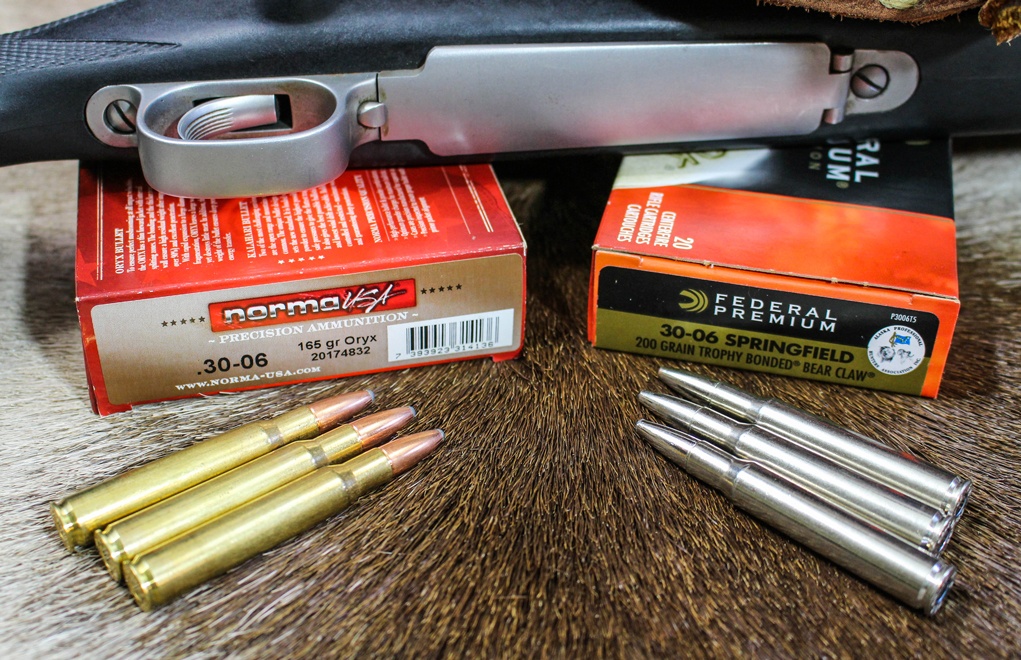
Before you cock an eyebrow and question the sanity of the author, please realize that the .375 H&H is considered the perfect cartridge for a mixed-bag safari, and that in addition to Cape buffalo and elephant, it’s responsible for a large number of impala, bushbuck, reedbuck and even duiker and steenbok, all of which are smaller than our whitetail deer. If you feel that a 300-grain bullet is a bit too light for the biggest game animals, look to the 350-grain Woodleigh Weldcore and FMJ. They are available as a component bullet and as loaded in the Norma African PH ammunition line.
Many of the same attributes of the .375 H&H can be said about the .375 Ruger, though ammunition is nowhere near as plentiful. That most certainly plays a role in choosing an all-around cartridge, especially while travelling abroad. The various .416s, and I’ll include my personal favorite .404 Jeffery, offer a similar level of flexibility, but with an emphasis on the heavier end of the spectrum. The 400-grain bullets handle the big game perfectly, and with a marked improvement, but they give up the lower end of the spectrum. They bottom out at about 300 grains, while topping out at 450 grains, but they are geared much more toward being a true big game rifle. For the most flexibility, look to the .375 H&H.
North America: One And Done
If staying in North America and you want to purchase a rifle for all of our game including the biggest bears, think about a cartridge that has the capability of launching a 250-grain bullet of decent diameter. Yes, I know that many of the biggest bears are killed each year with a good old 180-grain .30 caliber, but that’s not nearly as effective as one of the .338s or .35s.
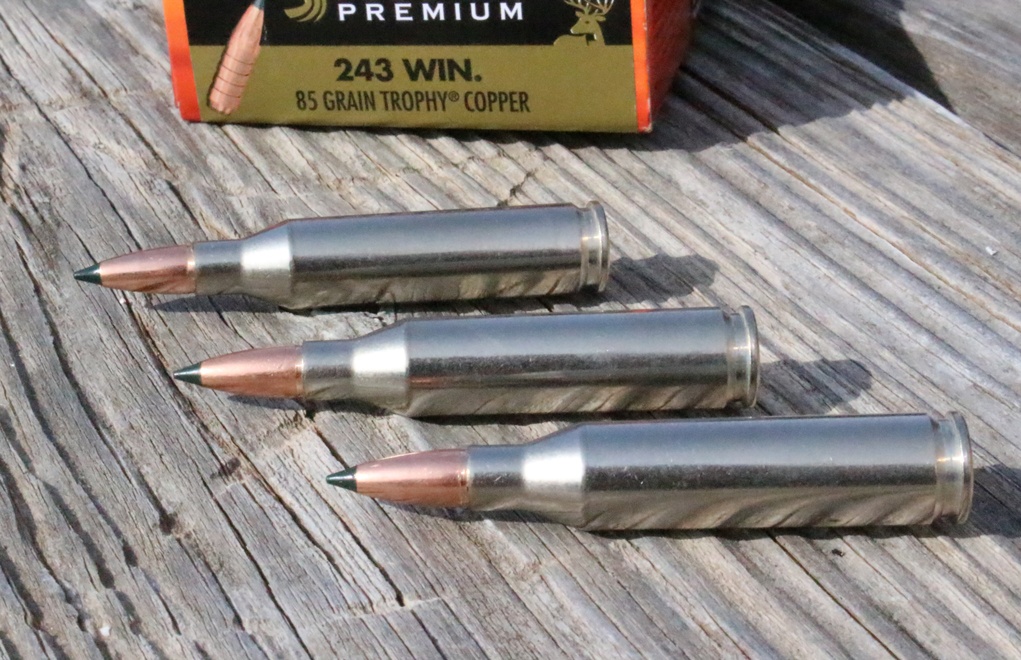
Though a rarity, I feel the .338-06 A-Square makes a great all-around choice, as it can use bullets from 176 grains (in the Cutting Edge Raptor) up to 250 grains. But, it hasn’t really caught on — for reasons I can’t explain — so getting ammunition can be difficult, but it does exist. The .338 Winchester Magnum — once touted as the definitive elk cartridge — is absolutely a candidate for the North American all-around cartridge. It has the aforementioned range of .338-inch bullets and it can handle some of the 275-grain component bullets if you really want to get heavy.
The .35 Whelen and .358 Norma Magnum will push the 250-grain .358-inch bullets to respectable velocities, handling North America’s heavyweights, but you give up quite a bit on the low end, and I feel the .338 Winchester’s popularity makes it the most readily available of this lot. It can also be snotty off the bench — I prefer the .375’s recoil over the .338 Winchester’s — but it is very effective in the field.
At the very bottom of the spectrum for the heavyweights, I feel the .30-caliber cartridges with 200- or 220-grain bullets can get the job done. If you’re the guy who plans maybe one or two hunts for the great bears of the north and absolutely refuses to purchase another rifle for the trip, a .30-06 or .300 Winchester loaded with heavy, premium bullets will serve as an all-around choice.
Deer: One And Done
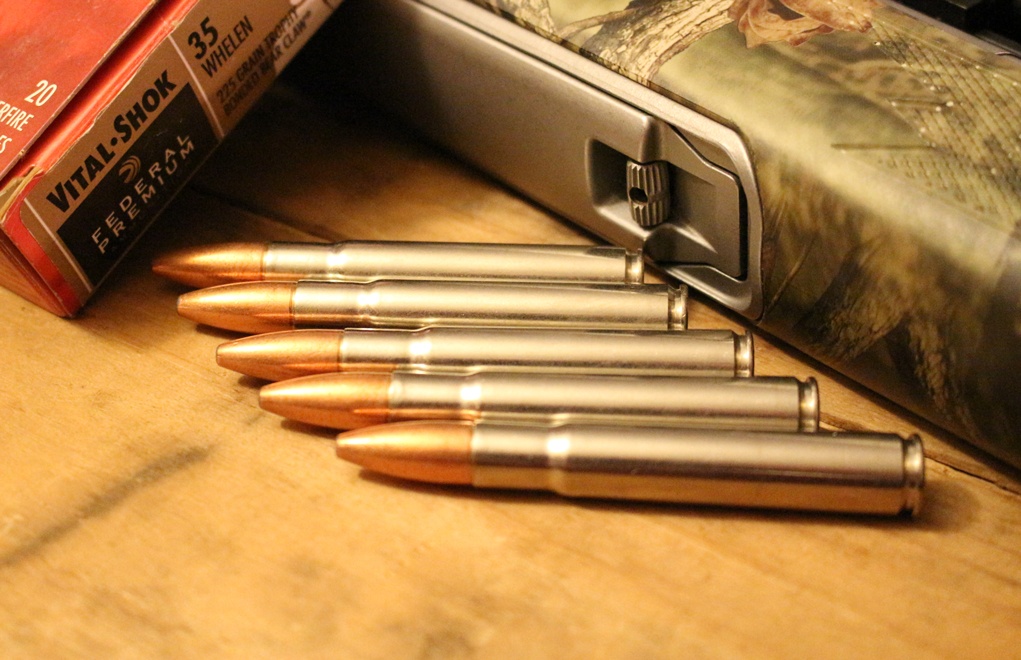
Coming down to the deer/sheep/elk/antelope class, there are a multitude of choices that will serve. Bullet construction has certainly changed the old adages and caliber minimums; the bullets that our grandfathers used were certainly not as tough as the selection we have here in the 21st century. Jack O’Connor championed the .270 Winchester, and he was heavily criticized by Elmer Keith — but had Keith seen the modern bullets we have today, he may very well have changed his mind. And yes, the .270 Winchester is a perfectly viable elk gun. For elk, I feel a bullet weighing between 140 and 250 grains, of appropriate sectional density (above 0.270) should get the job done very well.
Even among the deer hunting cartridges, the species and location of deer can affect the choice. A whitetail buck in the south is not the same as a whitetail buck in Saskatchewan, and while a 6mm cartridge may be perfectly adequate for the former, I’d recommend a larger bore for the latter. Add in the possibility of larger-bodied mule deer, or a distant shot on a Dall’s sheep, Coues deer or pronghorn antelope, and you have to really think about what you’re going to purchase.
As I stated earlier, I like the 6.5mm cartridges for an all-around deer gun, and I like the 7mms and .30s just as much. For an all-around cartridge in this class, I’d like it to be able to use bullets between 120 and 180 grains, and to be able to retain at least 1,000 ft.-lbs. of energy at the 400-yard mark. This includes the faster .25 caliber cartridges through the .30s, with a muzzle velocity between 2,500 and 3,000 fps with a bullet on the heavier side of average should suffice.
Looking at all these ideas, it’s really no wonder why the .30-06 Springfield, .308 Winchester, 7mm Remington Magnum, .270 Winchester, 6.5 Creedmoor and .300 Winchester Magnum remain such fantastic sellers: They cover quite a few bases and deliver all the performance that many hunters will ever need. It’s also no surprise that the .375 H&H Magnum remains so popular among the Northern hunters here in North America and among so many African hunters. All these cartridges are relatively mild, in comparison to the huge-cased super-magnums, yet offer a definite ballistic advantage over the .30-30 Winchester and .45-70 Government, which are constrained by flat-nose bullets and a rainbow-like trajectory.
Availability Matters
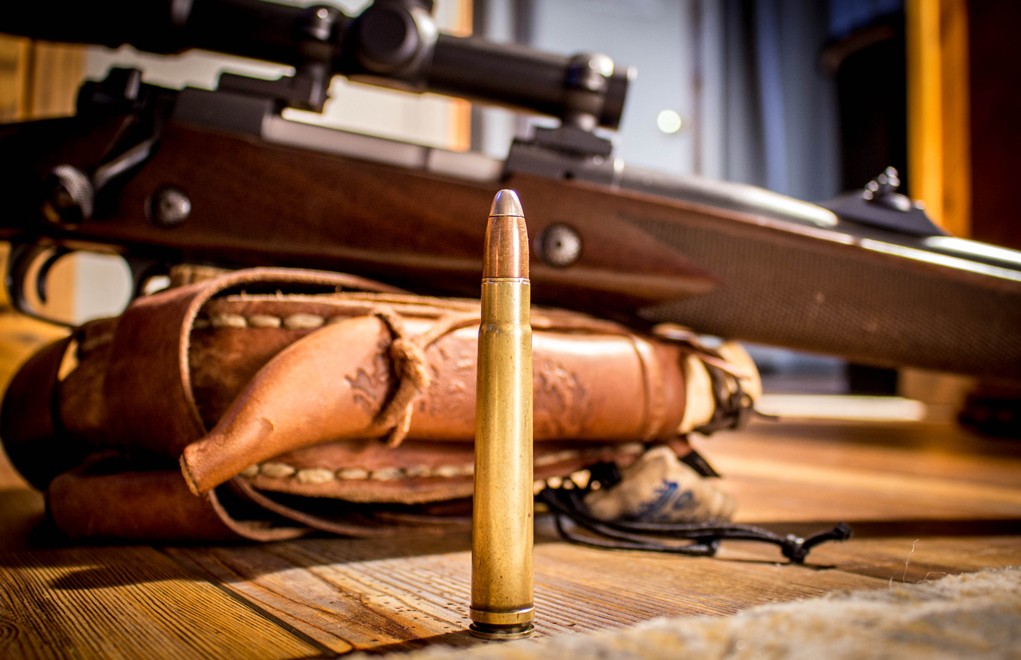
In my opinion, to classify a cartridge as an all-around choice, ammunition needs to be readily available. There are many choices that offer a ballistic formula which mimics or equals those we consider a perfect all-around choice, which are simply difficult to obtain. Certainly the 7mm WSM offers a sound ballistic formula; a game animal would never know whether the 7mm bullet was launched from a WSM cartridge or a belted Remington Magnum. But owning a rifle chambered for 7mm WSM comes with the issue of finding a reliable source of ammunition.
The same can be said for some of my other favorites, which are admitted rarities. The 6.5-284 Norma — which is my personal favorite among the herd of 6.5mm cartridges — has fewer choices among the factory loadings than I would like to see, and while I can handload all the ammunition I’ll ever need for it, it’s hard to find on the shelves of smaller gun shops. My beloved .318 Westley Richards, an admitted rarity with wonderful and highly usable ballistics, has but one factory offering, and the availability of that is spotty at best. The 7×64 Brenneke I mentioned earlier is the ballistic twin of the .280 Remington and perfectly viable for hunting the majority of the world’s popular game animals, but it suffers from the same ammunition drought. The .300 Holland & Holland Magnum sits comfortably between the .30-06 and the .300 Winchester — just about perfect as an all-around cartridge — but it has been pushed off the stage.
Should we all own at least one rifle in the top-selling hunting calibers? It might not be a bad idea, especially if you plan to travel, but I’ve always championed the oddballs as well as the safe, sensible choices. My choices for a two-gun traveling battery began as a .300 Winchester and .375 H&H, but somehow morphed into a .318 Westley Richards and .404 Jeffery over the years. Either combination would suffice, but I appreciate the nostalgia of the “different” cartridges, especially those of yesteryear that have fallen to the wayside. I doubt there’s a hunting situation where either pair would have an advantage, considering the shooting distances on my hunts are usually within 200 yards. But, undeniably, the ammunition for the .300 Win. Mag./.375 H&H combo is much easier to come by than for the latter.
So, when shopping for your next purchase, sit down and mentally evaluate exactly what you’ll be asking of the cartridge. Even if you hunt in the thick woods, having a rifle with the capability of handling a bean-field shot isn’t a bad thing. I know I’ve ended up hunting places I could never have imagined as a younger man, and it was nice to be able to simply change the bullet style or shape to take my old favorite “all-‘rounder” to some new hunting scenario, affording me the comfort of a rifle I know very well, albeit in a strange land.
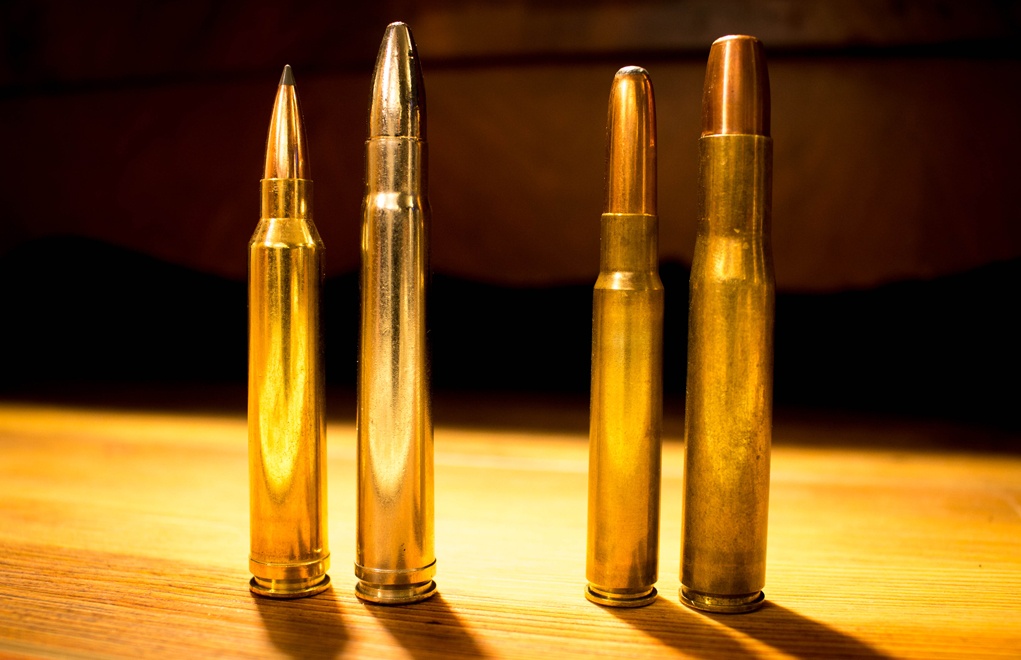
Editor's Note: This article originally appeared in the July 2018 issue of Gun Digest the Magazine.
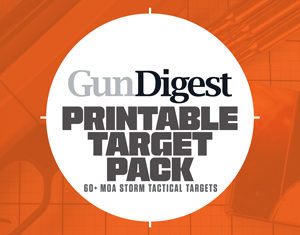
Next Step: Get your FREE Printable Target Pack
Enhance your shooting precision with our 62 MOA Targets, perfect for rifles and handguns. Crafted in collaboration with Storm Tactical for accuracy and versatility.
Subscribe to the Gun Digest email newsletter and get your downloadable target pack sent straight to your inbox. Stay updated with the latest firearms info in the industry.

![Best Concealed Carry Guns In 2025 [Field Tested] Wilson Combat EDC X9S 1](https://gundigest.com/wp-content/uploads/Wilson-Combat-EDC-X9S-1-324x160.jpg)


![Best 9mm Carbine: Affordable PCCs [Tested] Ruger Carbine Shooting](https://gundigest.com/wp-content/uploads/Ruger-Carbine-Shooting-100x70.jpg)
![Best AR-15: Top Options Available Today [Field Tested] Harrington and Richardson PSA XM177E2 feature](https://gundigest.com/wp-content/uploads/Harrington-and-Richardson-PSA-XM177E2-feature-100x70.jpg)

I would not want an all-around rifle for which I could not handload — and being an old guy, one that would not beat me to death with recoil. So, my pick would be the .338-06 A-square. With a carbon-wrapped stainless barrel of 24 or 26 inches and handloads of monometal bullets from Barnes or Hornady (for heavy and dangerous game), I think I would be well-served. For small and medium-sized game (up to 300 lbs. give or take a few), I would consider factory ammo of the conventional variety, as long as it was accurate in my rifle. But half the enjoyment of any kind of rifle shooting involves making your own ammo for the task at hand. So, I would handload for lighter game as well.
After being a former competitor in different disciplines, including long range having my own gunsmithing shop 30+ years where I specialized in building high end, long range, and precision bolt rifles (mostly), and lifelong hunter, I recently decided to semi retire almost all my bolt rifles in favor of having 1 go to, allround rifle. I chose a Browning A-Bolt 2 action, made a exhibition grade Claro walnut stock for it, and Bartlein barrel and chambered it in 30-06. It will reliably put 5 150 gr Ballistic Tips into 5/8″ at 200 yards for whitetail and under, and same thing with 180 gr Nosler Accubonds or elk and larger. Not only will it group both 5/8″ at 200 yards, but i was/am delighted that both group almost exactly in the same POI at 200 yards. The only other bolt rifle i may want is a flyweight (5.5 #) scoped, loaded, slung 7mm08 for extended all day, days on end specifically for use when hunting hard for whitetails only.
Since I’ll never get to Africa, the 45 Colt will do everything I need. In a Winchester it makes a fine deer or Black bear combo out to 100 yards, maybe further if I used a scope. (I prefer peep sights.) It can be loaded almost to 45-70 power in the right rifle. In a handgun, it’s still enough for most game in the continental US (excluding Grizzly Bear) if you use the right load and don’t waste ammo on shots beyond your capability. Maybe not as concealable as a wonder nine, but I can carry either a single or double action except wearing track shorts and keep it concealed.
I actually tried to build my “one rifle” (I even picked the brains of a few gun writers by email, including Mr. Massaro), but last week I threw in the towel. There are several factors not covered in the article that can make a large impact on one’s choices, not the least of which is price. For myself, I’d decided on something rather early 20th century: a controlled round feed bolt action, minimum five round magazine, preferably fixed, 18-20″ inch barrel, and good receiver sights, chambered in something with a bore diameter between .356 and .416, capable of launching, at it’s top end, a high SD bullet at velocities in excess of 2,100 FPS. I was leaning toward 9.3x62mm because there seems to be an abundance of inexpensive ammo from Prvi Partizan and Sellier & Bellot. Sounds simple so far. Now throw in that I’m a lefty with a budget under $1,000. Suddenly, it’s a hunt for hen’s teeth. For the most part, I’ve found that CRF just doesn’t exist for a lefty under $1,500. Ammo for several cartridges mentioned in the article are up at nosebleed altitude. .375 Ruger starts at $60 a box. Not getting much practice in at those prices. I suspect ammo prices are the single reason there are so many .30-30’s and AR’s out in the hunting fields, even in places like Alaska.
Ruger jettisoned all but a few of their left handed Hawkeyes in 2015, leaving only two models in .375 Ruger, one long barreled bean field gun in 6.5 Creedmoor, and of course the Scout in .308. All over a grand, chamberings either too light for my top end or too hard on the bank account for meaningful practice. If I forget the cartridge and magazine wants, I’ve seen lefty .300 RCM’s at local dealers for under $500 – probably because nobody wants them and ammo is non-existent. Zastava makes almost exactly what I want, but they appear to have stopped U.S. distribution. Manufacturers wonder why lefties don’t buy their bolt guns. Someone please educate them on the meaning of the phrase, “self fulfilling prophecy.”
So, for now the whole idea gets put on the high shelf in the back. Maybe next year…
The title of the article should indicate “Hunting” catridge.
Because only ONE cartridge means only 1 for everything.
So to answer the question in the title my cartridge would be 9mm.
Good luck carrying one of those hunting cartridges for concealed carry.
All very good choices you mentioned. Personally I would go with the 460 mag for this reason: If it is chambered for the 460 you can send 45, 454 or 460. Long gun or hand cannon you have everything covered that walks the earth. Just a though.
Frank G